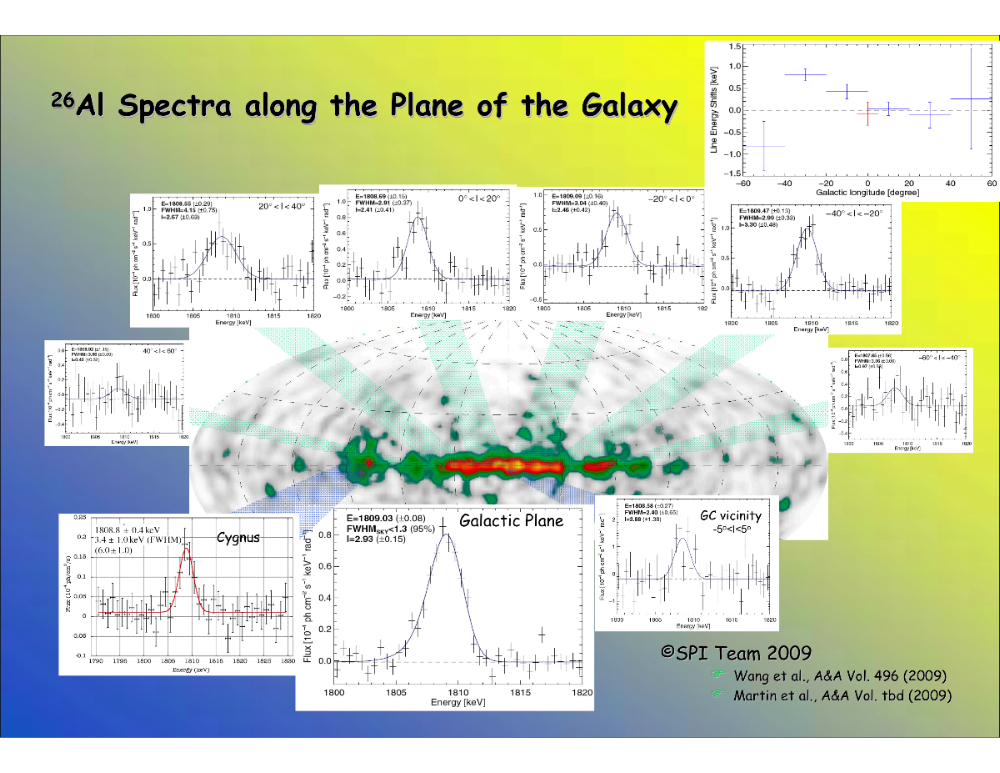
 Credit: Wang et al.; Martin et al.; SPI team
Credit: Wang et al.; Martin et al.; SPI team
Enrichment
Stars are the chemical factories of the Universe - they cook up complex elements (a process known as nucleosynthesis) then disperse them via stellar winds and supernovae. The process by which this happens is complex and the chemical enrichment of a galaxy by its member stars is something that is not well understood in detail. The INTEGRAL gamma-ray observatory has provided new observations which give astronomers the best-ever look at this process in the Milky Way. INTEGRAL has produced maps of the strength of an isotope of aluminum, 26Al, which is produced by evolved massive stars and by exploding massive stars. This isotope is a good tracer of recent chemical enrichment since it decays in only a few million years. The image above is a measure of the 26Al distribution around the Milky Way obtained by INTEGRAL's SPI instrument. Analysis shows that these data are consistent with a core-collapse supernova rate of about 2 per century in the Milky Way, and that the height of the Galaxy in 26Al enriched material is significantly greater than the molecular gas which defines the disk of the Galaxy.
Published: June 8, 2009
<
HEA Dictionary ● Archive
● Search HEAPOW
● Other Languages
● HEAPOW on Facebook
● Download all Images
● Education ● HEAD
>
Each week the HEASARC
brings you new, exciting and beautiful images from X-ray and Gamma ray
astronomy. Check back each week and be sure to check out the HEAPOW archive!
Page Author: Dr. Michael F. Corcoran
Last modified Tuesday, 27-Feb-2024 10:06:35 EST


